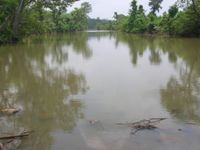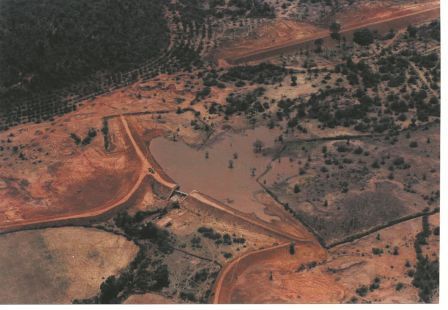Watershed Management
|
|
Mission:
Objective: The literacy level was quiote low due to employment of children in farming due to scarcity of work force.The present study was therefore undertaken to assess the impact of watershed development projects on land use, crop productivity and overall socioeconomic status of farmers in the region. Post treatment evaluation of watershed revealed that watershed technology in the socially and economically backward tribal village has proved a viable strategy to im-prove productivity of rain fed agriculture and socio economic status of tribal communities. The watershed management has given the villages, an economic benefit that is far greater than the sum of its parts. This has changed overall scenario of the treated area with increase in water level, increased agricultural and forest produce production; in-creased employment opportunities. A significant change in land use has taken place. Watershed development in the village resulted in significant increase in area under cultivation (132.91 %). The culturable wastelands and fallow lands have decreased by 26.67 % and 96.62 % respectively. An increase of 480.31 % in irrigated area was observed. An increase of 2.83 m and 3.0 m in ground water table was observed in the month of May and December. Increased irrigation facili-ties and improved crop demonstrations encouraged the farmers to adopt new crop production tech-nologies, which significantly increased the yield of crops by 27.01 to 131.7 %. The productivity of paddy, wheat, gram and mustard has increased by 53.24 %, 43.25 %, 58.02 % and 68.40 % re-spectively. The area under improved varieties increased from 12.2 ha to1980.5 ha. A perceptible improvement was observed in the quality of life. The average family income became doubled with in a short period of 3 years. Improvement in the economic conditions, led change in attitude of tribal families towards the education, health, environmental protection human right, self realiza-tion, for future production and cooperative life. In the beginning of the project where only 55 children were noticed to go school, but with improvement of life style of villagers in the area in 2007, 1174 students were recorded to seek education. Even most of the tribal families have started to send their children in Chitrakoot and Satna for better education. Villagers have realized awareness about environmental protection as a result more forest restoration is visible. The GDP of these 18 villages was observed to increase by 82.41 % and the watershed development pro-gramme was found to be economically viable with B: C ratio of 1.67. 
Economic evaluation of Chakra Nala watershed in Madhya Pradesh
Change In Irrigated Area
Stratagies The present study was therefore undertaken to assess the impact of watershed development projects on land use, crop productivity and overall socioeconomic status of farmers in the region. Post treatment evaluation of watershed revealed that watershed technology in the socially and economically backward tribal village has proved a viable strategy to im-prove productivity of rain fed agriculture and socio economic status of tribal communities. The watershed management has given the villages, an economic benefit that is far greater than the sum of its parts. This has changed overall scenario of the treated area with increase in water level, increased agricultural and forest produce production; in-creased employment opportunities. A significant change in land use has taken place. Watershed development in the village resulted in significant increase in area under cultivation (132.91 %). The culturable wastelands and fallow lands have decreased by 26.67 % and 96.62 % respectively. An increase of 480.31 % in irrigated area was observed. An increase of 2.83 m and 3.0 m in ground water table was observed in the month of May and December. Increased irrigation facili-ties and improved crop demonstrations encouraged the farmers to adopt new crop production tech-nologies, which significantly increased the yield of crops by 27.01 to 131.7 %. The productivity of paddy, wheat, gram and mustard has increased by 53.24 %, 43.25 %, 58.02 % and 68.40 % re-spectively. The area under improved varieties increased from 12.2 ha to1980.5 ha. A perceptible improvement was observed in the quality of life. The average family income became doubled with in a short period of 3 years. Improvement in the economic conditions, led change in attitude of tribal families towards the education, health, environmental protection human right, self realiza-tion, for future production and cooperative life. In the beginning of the project where only 55 children were noticed to go school, but with improvement of life style of villagers in the area in 2007, 1174 students were recorded to seek education. Even most of the tribal families have started to send their children in Chitrakoot and Satna for better education. Villagers have realized awareness about environmental protection as a result more forest restoration is visible. The GDP of these 18 villages was observed to increase by 82.41 % and the watershed development pro-gramme was found to be economically viable with B: C ratio of 1.67.
Change in land use Pattern due to Watershed Development
Change In Irrigated Area
Contact
| ||||||||||||||||||||||||||||||||||||||||||||||||||||||||||||||||||||||||||||||||||||||||||||||||||||


